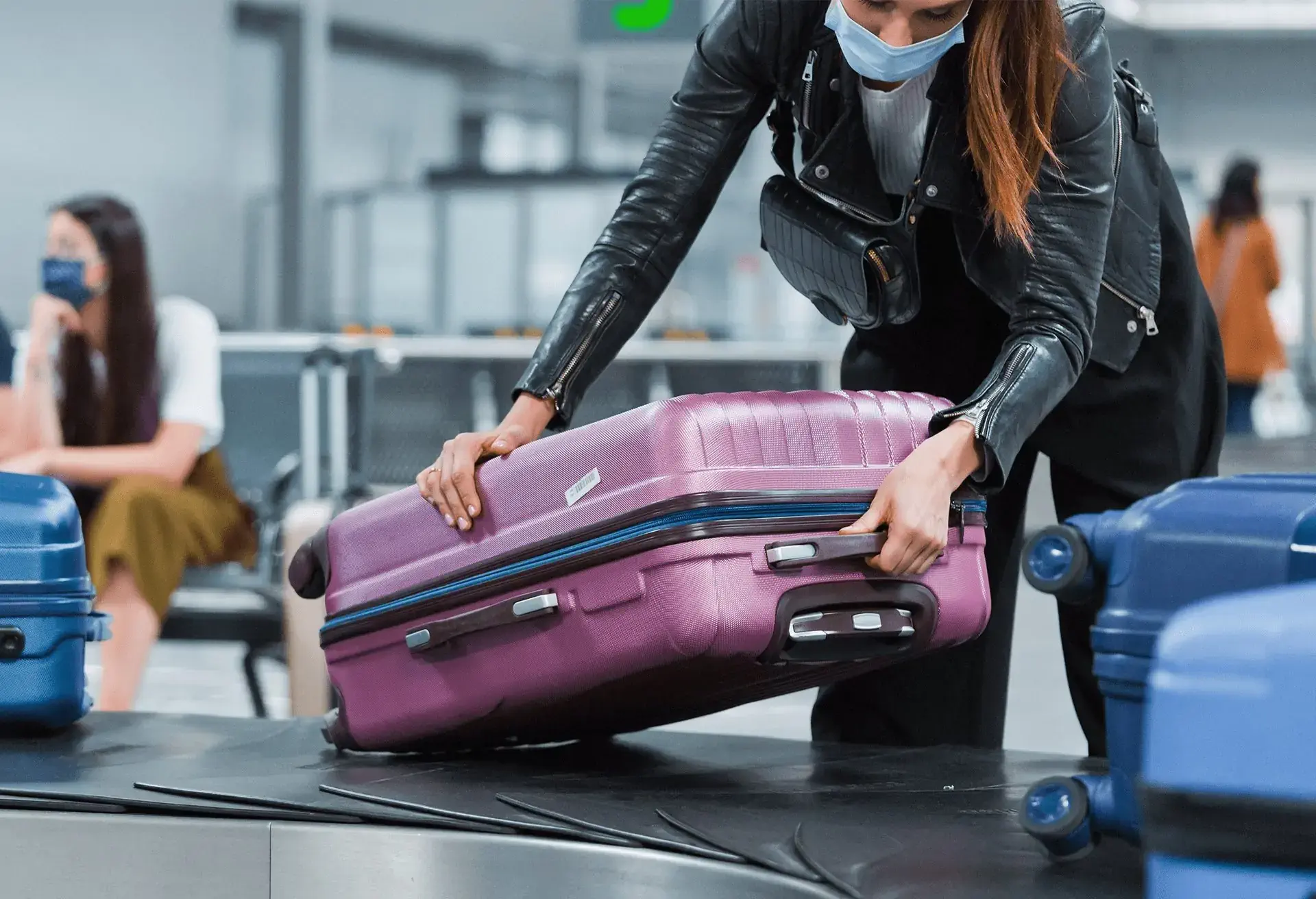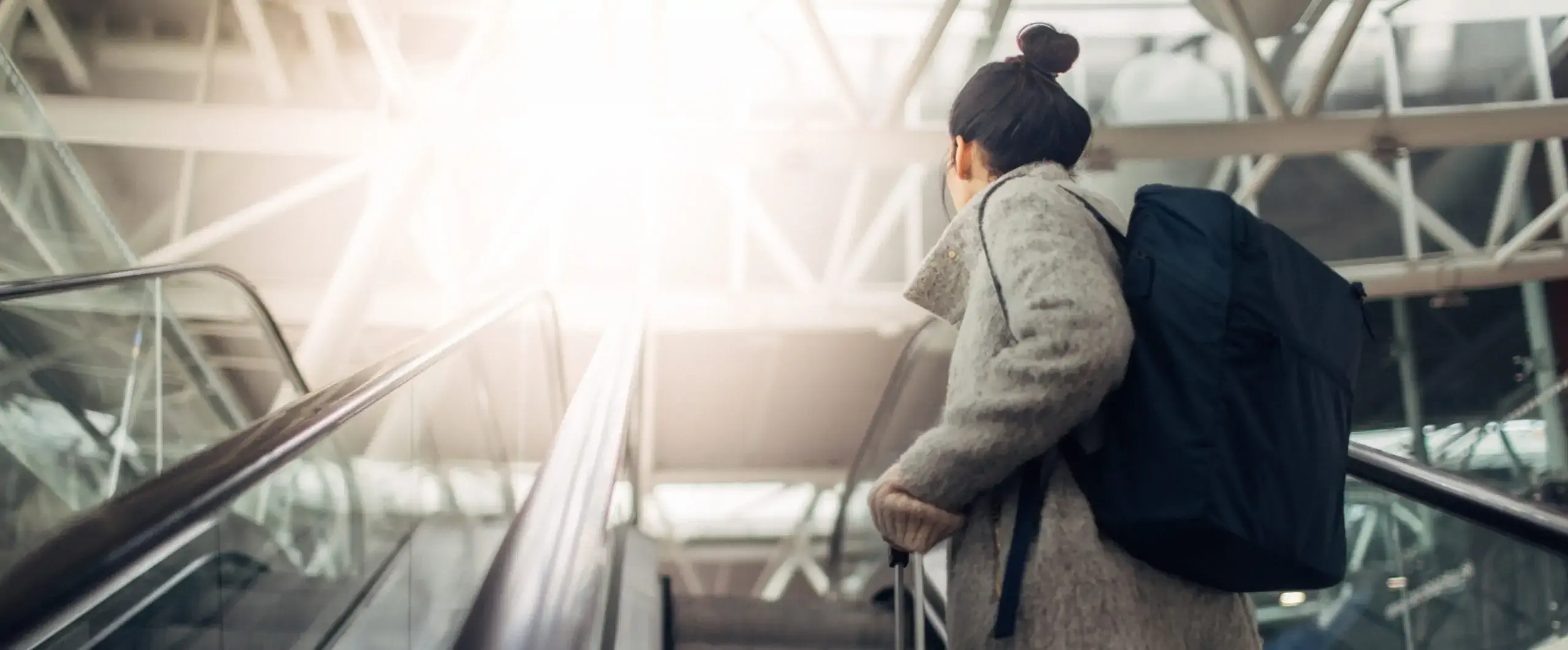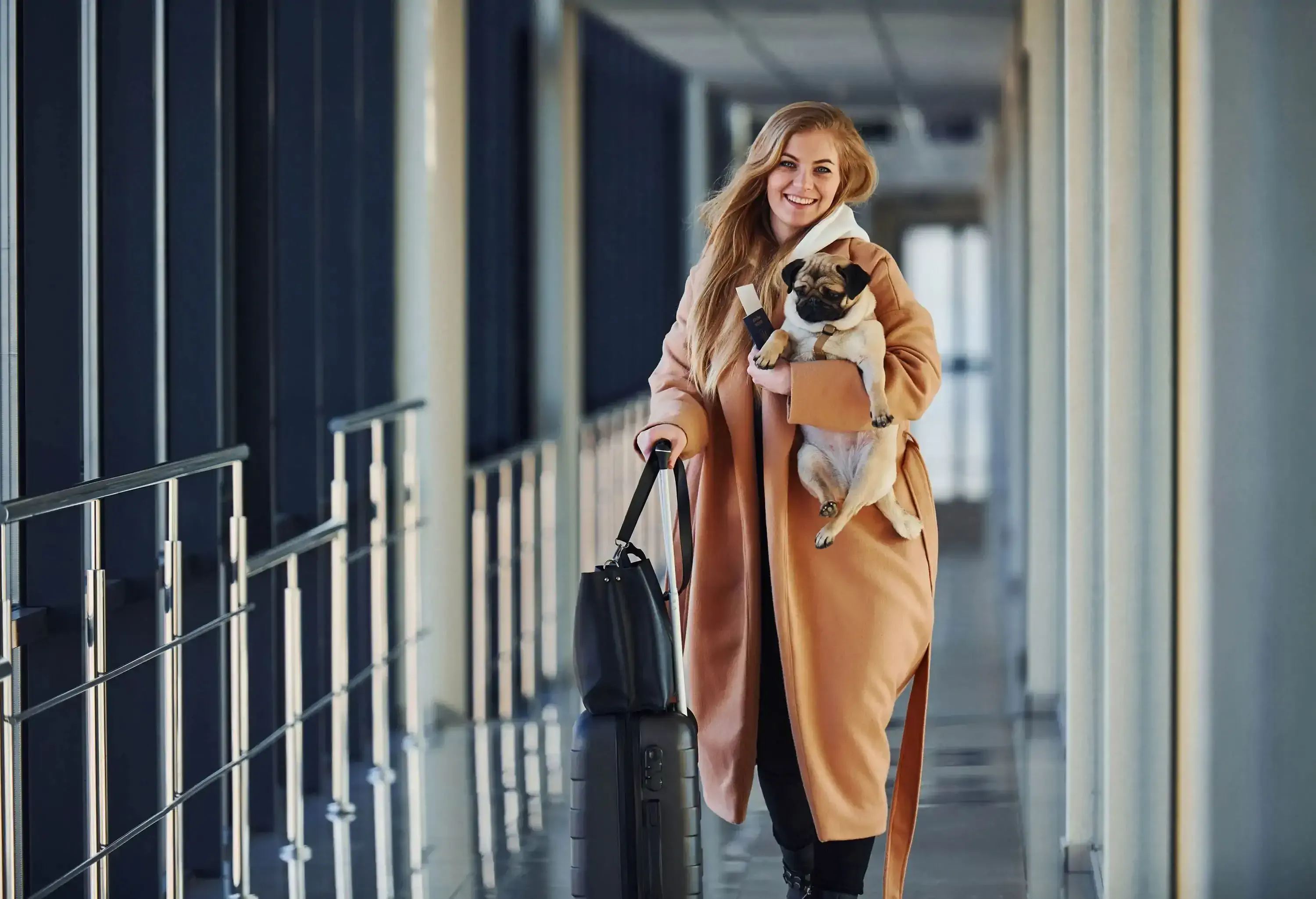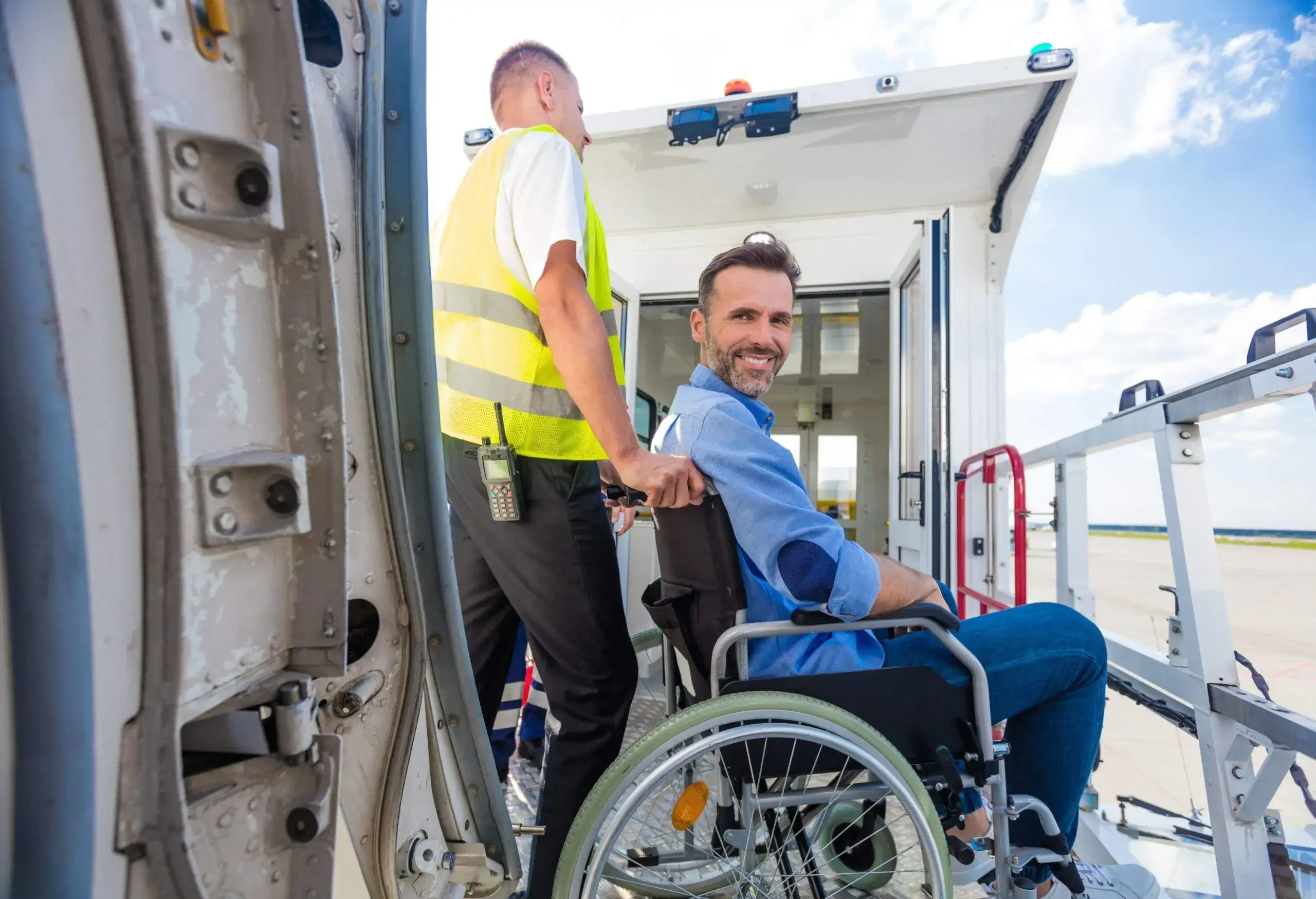Whether you’re missing long-distance loved ones or are just considering your options for travel now or in the future, flying may be on your mind. While there are always risks to traveling during COVID-19, flying may be a lower-risk option than you thought.
Read on for what to know about flying during COVID-19 and get our tips for making the experience as safe as possible.
Filtered air is actually your friend.
Sure, planes have a tendency to dry out your skin, but that same air that used to be a cause of dermatological woes is actually on your side during COVID-19. According to the CDC, “most viruses and other germs do not spread easily on flights because of how air circulates and is filtered on airplanes.” According to WHO, ventilation systems on modern aircraft provide a total change of cabin air 20-30 times per hour. And the recirculated air is typically passed through HEPA (that’s high-efficiency particulate air filtration if you’re ever on Jeopardy) filters, which remove more than 99% of airborne particles. Ultimately, according to IATA, between these HEPA filters, cleanliness protocol and additional procedures, “the current likelihood of contracting the virus while on flights is extremely low.” That said, it’s also on you to follow safety protocol, including wearing a mask in flight.
Choose your destination wisely.
Travel restrictions can change quickly, with more states and countries reopening and others potentially pausing their reopening plans. Because rules can vary by destination and often be further dependent on where you’re coming from, it’s important to stay up to date before you book. Use our Travel Restrictions maps (both international and domestic) as a starting point to see current restrictions, COVID-19 numbers by destination and to set alerts so you’ll be in the know when restrictions change for any selected destinations.
If you still haven’t chosen a destination, we’ve added a COVID-19 filter to our Explore map, so you can see the number of active cases in each destination while you’re planning, alongside flight prices. While both of these resources are great starting points, it’s always best to check with applicable government authorities once you’ve selected your destination.
Book flights with peace of mind.
Even with the most careful of planning, it’s impossible to fully know what the future holds. Most airlines have recently all but done away with change fees, so you can be comfortable booking that great flight price now and canceling later for any reason if needed. Again, it’s always best to check with your airline provider to confirm their flight change and cancellation policies.
Know the protocols of the airline you’re flying before you book.
Different airlines have added different safety and sanitation policies to make flying safer and more comfortable for travelers. From how often planes are cleaned to whether middle seats will be left empty. One airline is even implementing rapid COVID-19 testing on one route (San Francisco to Hawaii). But it’s especially important to pay attention to the dates of these policies. For example, while many airlines are leaving middle seats empty for a time, if this is important to you, you’ll want to ensure this is still the case for your future travel dates.
KAYAK also shows flights with added safety and sanitation protocol right in your search results. To compare what different airlines are doing, we’ve rounded up some of the health and safety policies.
Follow the rules.
Know the rules going into your trip and be prepared to follow them. Masks are currently mandatory for all flights. If you’re traveling with children over two years old, they’ll likely be required to wear a mask for the duration of the flight. Preparing them for this and practicing ahead of time can make the experience easier.
Consider more than just your time in the air.
Because of the way air circulates and is filtered, your time spent in the air may actually bear you less risk of exposure to COVID-19 than everything that happens before and after. From getting to the airport to navigating security to waiting to board, it’s important to limit your contact with others as much as possible, avoid high-touch surfaces and sanitize your hands often. Opt for taxi or ride-share over public transportation. If you do the latter, avoid pooled rides.
Check-in online and print your boarding pass at home.
Limiting unnecessary contact is the name of the game. By checking in online and printing your boarding pass at home, you’ll be able to avoid interacting with airline personnel to check-in, as well as avoiding touching the high-touch surfaces of airport kiosks. You can also opt for a mobile boarding pass, but be sure to pack wipes and remember to disinfect your phone once you’re through the checkpoint. Pro tip: Use KAYAK Trips to keep all of your information organized.
Opt for a carry-on over a checked bag.
Avoid unnecessary interactions and multiple additional people handling your luggage by traveling with only a carry-on if you can. While there’s still a chance your bag will need to be inspected at airport security, packing light will make this easier. And this will still result in less hands on your baggage than if you were to check it.
Be a savvy flyer.
While being a prepared traveler was always appreciated, it’s even more important during COVID-19. The goal is to spend as little time in crowds as possible, which means getting through airport security quickly. Here are some tips to consider:
- Wear slip-on shoes (but don’t forget socks).
- Avoid accessories and unnecessary layers. If you’d have to remove it to get through security, don’t wear it to the airport.
- Have your boarding pass and ID easily accessible.
- Be extra mindful of liquids in your luggage. While liquids typically need to be less than 3.4oz, hand sanitizer can currently be up to 12oz – but check requirements before you go for any changes. Also, keep in mind, if it’s over 3.4oz, it will require extra screening.
- Keep your electronics in easy-to-find places.
Consider applying for a travel program to get you through security faster.
Programs that allow you to breeze through security faster, with less time spent in line and less direct contact, are extra beneficial right now. With programs like TSA Precheck™ or CLEAR, you’ll often be in a separate (shorter) line, which likely means a quicker experience. Plus, you’ll get to leave jackets, shoes and belts on, as well as keep your laptop and liquids in your carry-on bag. According to the official website, 99% of TSA PreCheck™ users waited less than five minutes in August 2020.
Do your part when you return home.
Once you return from your trip, follow the rules required for re-entry. You may be required to quarantine for two weeks or take a COVID-19 test. And, even if it’s not required, taking one of these two steps can give you peace of mind and the assurance that you’re doing your part to slow the spread.
Thinking about accommodation? Compare hotels and vacation rentals side-by-side in our comprehensive accommodation search. And once you’ve decided, here are our tips for staying in a hotel and tips for staying in a rental during COVID-19.






